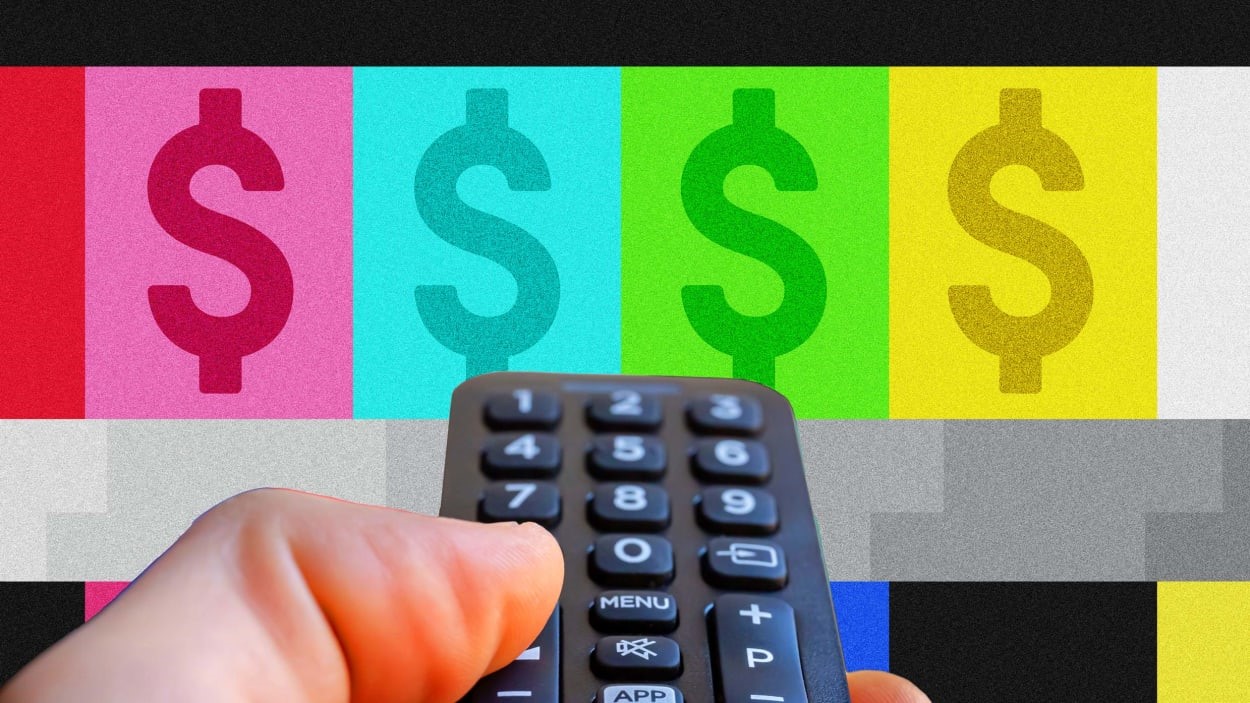Why every streaming service wants you to watch ads now
Disney+ is about to get more expensive: The streaming service for all things Marvel and Star Wars is raising its monthly subscription price for its ad-free tier by $3 next month. The plan will cost $13.99 going forward—twice as much as Disney+ charged consumers when it launched at the end of 2019.
Disney is not the only company asking consumers to pay more for streaming: On Friday, Amazon announced that it will begin to charge Prime Video viewers an additional $2.99 per month starting early next year if they want to continue watching the service without ads. Warner Bros. Discovery raised the price of its Max subscription service by $1 earlier this year; NBCUniversal’s Peacock asked consumers to pay an additional $2 for its ad-free Premium Plus plan in August; Disney-owned Hulu is increasing the price of its ad-free tier from $14.99 to $17.99 per month in October, and Paramount+ increased prices of its plans by $1 to $2 per month in June.
These price increases follow years of heavy investments from media companies, which poured billions of dollars into streaming to both catch up with Netflix and future-proof their business as consumers are increasingly abandoning traditional pay-TV services. Under pressure from Wall Street, Disney and its industry compatriots have decided that the days of cheap streaming are over—unless you’re willing to watch ads, that is.
Disney is not increasing the cost of the ad-supported Disney+ plan, which is priced at $7.99. The ad-supported plans of Hulu and Max also stayed the same, while other services increased the subscription fees of their ad-supported plans at a slower rate than their ad-free offerings. Netflix even got rid of its basic $9.99 ad-free plan altogether in July, forcing new subscribers to make a stark choice: Either pay $15.49 per month for an ad-free viewing experience, or pay just $6.99 for the company’s newly launched ad-supported plan.
Steep price hikes for ad-free streaming to steer consumers towards ad-supported plans, and that gambit appears to be working. Disney CEO Bob Iger told CNBC in July that 40% of new Disney+ subscribers now opt for the service’s ad-supported plan. Iger professed that this number was higher than he had expected, adding that “advertising will be a significant factor” in the company’s streaming business going forward.
Some have mused that media companies were trying to turn back the clock with their push for ad-supported streaming, and essentially recreate the economics of cable TV, which long has relied on a mix of ads and subscription fees.
In reality, the industry’s moves are more about turning every streaming service into Hulu.
When Hulu launched its paid subscription service in 2010, it was the first company to ask viewers to pay a monthly fee and also watch ads in order to stream TV shows on the internet. It was a controversial move at the time, and Hulu threw advertising-averse consumers a bone with an ad-free plan a few years later. That plan cost $4 more at the time, but the company never made a big effort to convert existing subscribers to it, and in fact even lowered the price of its ad-supported plan by $2 in 2019.
That’s because Hulu quickly discovered that it could make more than up for those extra subscription fees with premium video advertising. “The average revenue per user for the ad-supported [plan] was materially higher than the [revenue] for those who were taking the no-ad version,” recalled former Disney streaming boss Kevin Mayer in an interview with CBNC last year.
Former Netflix CEO Reed Hastings resisted advertising for years. When he ultimately changed his mind, he wasn’t shy about giving credit to the service that inspired Netflix to embrace ads. “I think it’s pretty clear that it’s working for Hulu,” Hastings said when he announced Netflix’s plans for its own ad-supported tier in April 2022.
Copying Hulu’s strategy appears to be working for Netflix as well: CFO Spencer Neumann told investors last April that monthly revenues per user on the $6.99 ad-supported plan were already higher than those on the $15.94 ad-free plan. “We really like the path we’re on, the trajectory we have,” Neumann said.
Some analysts have cautioned that these numbers may be supply-constrained and will go down as more viewers tune into Netflix’s ad breaks. However, Lightshed Partners analyst Richard Greenfield believes that the company can more than make up for that over time with innovative-ad formats. “We wonder whether the long-term ad ARPU [average revenue per user] is actually far higher than where it is today,” Greenfield wrote in a note to investors in May.
Market researchers expect streaming services to generate $6 billion with ad-supported subscription plans this year alone. By 2029, that number could reach $20 billion, according to a new Digital TV Research report.
There are also signs that the move toward ad-supported subscription plans will continue: Apple, whose Apple TV+ service remains ad-free for the time being, hired an ad executive for the service earlier this year. The company has yet to say whether it has any intention to introduce ads to Apple TV+. But if and when it does, it will likely follow the rest of the industry and further raise the price of ad-free streaming.
(13)



